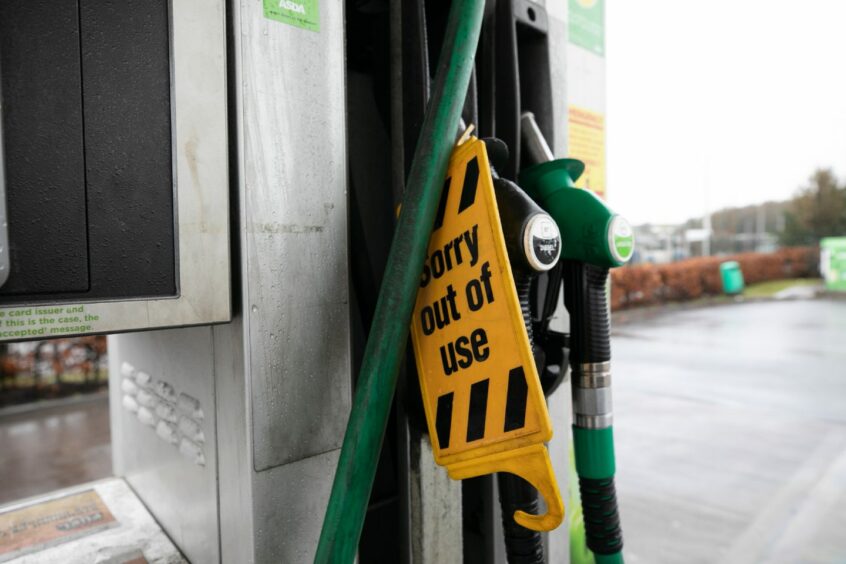Care workers in Fife say they are struggling to do their jobs because of soaring fuel costs.
A survey conducted by the Fife Care At Home Collaborative reveals 75% of workers are considering leaving the profession.
A staggering 97% are experiencing financial hardship.
Most care workers in Fife working for independent providers use their own cars to visit clients.
And they tell us the mileage rates they’re paid aren’t covering their work, as fuel prices increase.
Some are making choices between fuelling their cars or eating – or even having to borrow money to finish a shift.
All four care workers we spoke to from across Fife say it’s time for action, as does the Fife Care At Home Collaborative.
Why are carers being hit by fuel rises?
The collaborative is made up of 16 independent organisations, working in partnership with the Fife Health and Social Care Partnership.
They provide more than 90% of all externally commissioned care at home in Fife.
Rachel Payne, speaking on behalf of the collaborative, says the situation is critical.
“The pressure on the sector is huge,” she says.
“One provider told me this week ‘soon we may have to prioritise only the most vulnerable’.”
Staff pay up front for fuel and are reimbursed, but the rate of mileage varies between employers. For some staff, it can be as low as 20p per mile.
Organisations say that’s because the hourly contractual rate they get from the local authority doesn’t reflect the actual mileage travelled by staff.
It has also created inequality between them and those working for local authorities and the NHS.
Local authority care staff are paid a mileage rate of up to 45p per mile. NHS staff are paid 61p a mile.
What’s the reality for Fife care workers?
Sara Whitelaw from Glenrothes works for Connected Care Service and says fuel is now her second-biggest monthly expense, after her rent.
“I’m paying about £400 a month, minimum,” she says.
“There are staff leaving because of it. And I’ve thought of it too.
“If I didn’t have my husband’s wage coming in, I know 100% I wouldn’t be able to do this job.”
Mum-of-three Shannon Andrews, who works for ACS, adds: “I’m about £20 a day for diesel and I can’t afford to cover extra shifts because of it.
‘I’ve worried about running out of fuel’
“Month to month, it’s absolutely ridiculous.
“Although I love my job, I’ve considered leaving. With winter coming it’s going to get worse.
“There have been times when I’ve worried about running out of fuel or not having enough money tomorrow for petrol.”
‘Something to eat or fuel in the car’
Michael Neilson from Dunfermline works for Avondale Care Services and says: “I’ve had to choose between putting fuel into the car and buying something to eat at some stages.
“It can be quite stressful and overwhelming.
“On the bad days it can get to the point where you struggle to see how viable it is as a long-term employment opportunity.”
Elaine Sweeney from Glenrothes says she started working for Careplus in April.
“I love it, but if this continues I’m not going to be able to afford to do the job.
“I’m about £300 a month in fuel.
‘I had to borrow money to finish my shift’
“I was getting so low a couple of days before payday, I had to borrow £20 from my son to put fuel in the car, just to finish my shift.
“If you work extra, you have to put extra fuel in, so it’s a catch 22.
“It’s very stressful – to have to think about leaving the job you love because we can’t afford to do it.”
Perfect storm
Rachel Payne continues: “We’re caring for the people of Fife and if our carers can’t do that, where will the people who need care go? Many will end up in hospital.
“It’s a perfect storm. The existing pressures are so big. But with winter coming in, and if those workers leave, I can’t see any extra capacity.”
The collaborative is calling on immediate direction from the Scottish Government to Health and Social Care Partnerships.
And extra resources so organisations can pay staff an inflationary rate to address inequalities.
“With a fairer rate of pay, provider organisations are more likely to secure the retention of their workforce.
“They can also attract new recruits and potentially be able to re-engage those that have left for fuel impact reasons alone,” she adds.
What does the government say?
Social Care Minister Kevin Stewart says the government understands the impact the increase in fuel prices is having on social care providers and staff.
“I am aware of the issues raised by the Fife Care At Home Collaborative.
“I’ve instructed my officials to investigate ways in which we can continue to support our social care staff.
“I’ll be writing to the UK Government to press them to help those workers who are impacted by the rises in fuel prices.”


















Conversation